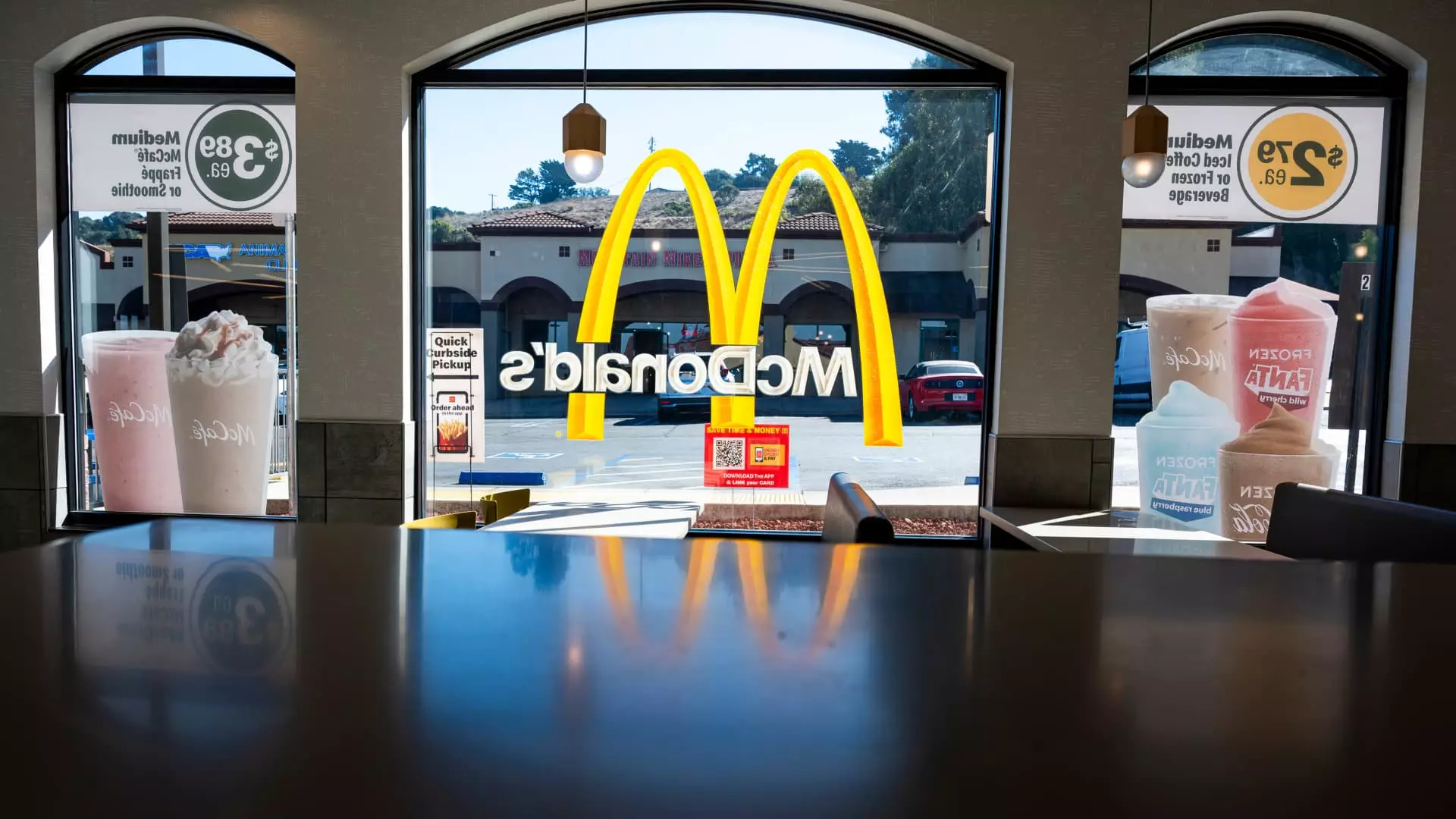As the restaurant industry strides toward 2025, significant uncertainties loom due to external factors and fluctuating consumer behavior. Executives envision a tumultuous start, akin to entering like a lion, but they harbor hopes for a resurgence by year-end. This shift is chiefly attributed to several factors, including harsh weather conditions, existing consumer cautions, and internal market dynamics.
The opening months of the year have presented significant challenges for a multitude of restaurant chains, including giants like McDonald’s and Wendy’s. Many establishments reported a decline in same-store sales—a crucial performance metric—amid frigid temperatures, widespread wildfires, and an overall climate of consumer apprehension. Executives from various chains noted an uptick in fourth-quarter sales, spurred by the introduction of value offerings that appealed to diners looking to retreat from home-cooked meals.
Despite these improvements, the optimism did not carry over into January. Wendy’s CFO, Kenneth Cook, addressed the situation candidly during a conference call, indicating that particularly significant weather events further intensified existing traffic issues in the industry. Although fast-food net sales demonstrated modest growth of 3.4% compared to the previous year, this figure fell short of the heightened growth witnessed in December. Furthermore, the breakfast and lunch segments saw a downturn in customer turnout, highlighting ongoing hesitance among consumers.
Experts and industry leaders alike are grappling with shifting consumer sentiments. Doug Fry, President of Subway U.S., articulated that consumers remain cautious, closely monitoring economic fluctuations. They are not willing to sacrifice quality or portion sizes, indicating a strong demand for value in their purchasing decisions. This perspective hints at a broader trend where consumers are inclined to spend money wisely, seeking the best return on their investment for dining experiences.
The year-on-year comparisons to last year’s sales performance—marked by significant declines—are expected to ease as the months progress. In particular, the summer months are anticipated to reflect improved traffic and sales as the industry starts to recover from its previous lows. Restaurant Brands’ CFO, Sami Siddiqui, expressed optimism that even monthly analyses could turn around as comparisons become less daunting.
Environmental issues, such as extreme weather patterns, have had a tangible impact on restaurant operations. Chipotle Mexican Grill reported particularly severe setbacks due to the wildfires in Los Angeles, estimating a 400-basis point decrease in same-store traffic growth. These climatic disruptions not only dampened consumer turnout but also influenced operational decisions, exacerbating existing sales challenges. The anecdotal evidence from Chipotle highlights how unpredictable weather conditions can significantly disrupt local economies and consumer habits, particularly in the food service sector.
Adding to these challenges, external economic issues, such as inflation and tariffs, pose additional threats to restaurant profitability. In recent weeks, U.S. consumer sentiment has dipped to a seven-month low, raising concerns about rising food prices and increased costs for consumers dining out. This anxiety among consumers may directly influence decision-making, leading to decreased foot traffic in restaurants during the early months of the year. As reported, food prices away from home have surged by 3.4% in the last year, placing additional pressure on restaurant margins and consumer wallets alike.
Looking forward, industry experts are predicting gradual improvements as we progress through 2025, with many chains expected to recover lost ground in the latter half of the year. McDonald’s, for instance, is gradually anticipating a rebound in demand following the infamous E. coli outbreak that disrupted sales. CEO Chris Kempczinski expressed cautious optimism that improving consumer health could propel sales upward, particularly benefiting lower-income demographics.
Conversely, Starbucks is amid a more extended recovery phase, grappling with declining same-store sales that have persisted for several quarters. The coffee behemoth’s approach to weather this storm includes suspending fiscal outlooks while focusing on long-term recovery strategies. In its latest communications, Starbucks has indicated that earnings improvement is anticipated as they navigate through this restructuring period.
Navigating the restaurant industry in 2025 represents a balancing act between facing unavoidable challenges and seizing opportunities for growth. The experiences of these companies underline the need for adaptability in the face of unpredictable environments and shifting consumer preferences, showcasing how the industry must evolve continually to thrive in tumultuous times.

Leave a Reply